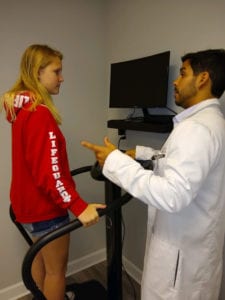
By Dr. Thomas Romero DC, Neuroplasticity Professional, Optimal You Brain Centers
Pertaining to children with autism, we’re going to take a look at the task-negative mode and task-positive mode areas of the brain. These are located in the Dorsolateral prefrontal cortex, and are important to focus on patients with autism. Why? Because studies have shown that the corpus callosum in patients with autism has decreased in size (meaning a decrease in commissural fibers, axons that go from the left hemisphere to the right hemisphere of the brain) and they have more projection fibers (this being axons within the brain that go from the back of the brain to the front of the brain). This is important to identify as it shows how the projection fibers are in abundance within certain areas which results in over-stimulation of areas within the brain and also under-stimulation of crucial pathways that exist that the commissural fibers run through.

This over-stimulation/activation of the dorsolateral prefrontal cortex is important to pay attention to. Individuals with autism have a characteristic to over-react to salient stimuli, meaning they tend to have adverse reaction to stimuli within the environment such as a car horn or fire alarm. In essence, when hearing and seeing a fire alarm going off this area is what modulates the patient’s behavior so that the proper response is elicited, whether that be to ignore the alarm because it is a set drill or to react and process the fire alarm as if there is a real fire in the building and the life is threatened. A proper sense of alertness and fear should be instilled and modulated in accordance to the situation for optimal survival.
At Optimal You Brain Centers we can identify the deficient pathways within the brain and restore these tracts to optimize function.
Dr. Thomas Romero, DC is a Chiropractic physician in the Ponte Vedra Area that conducts Neuroplasticity therapies at his practice Optimal You Brain Centers (904) 373-5852.
FEB